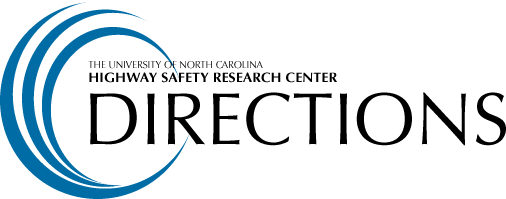

For more information, please contact:
Dr. Ron Hughes
919.962.7411
HSRC explores accessibility issues at modern roundabouts
When properly designed, roundabouts offer a safer alternative to the traditional intersection, resulting in fewer serious vehicle crashes. Yet, despite their recognized safety benefits with regards to vehicles, roundabouts offer potential hazards for blind pedestrians. The Highway Safety Research Center at UNC is currently conducting research aimed to improve the accessibility of blind pedestrians crossing at modern roundabouts.
Research conducted in this area to date has shown that blind pedestrians require longer gaps in traffic than sighted pedestrians when attempting to cross roundabouts and in many instances are more likely to take risky gaps – gaps too short to complete the crossing before an approaching vehicle arrives at the crosswalk. The research has also shown that this problem is worse at the exit lane of a roundabout and is aggravated by drivers who fail to yield to pedestrians. Even when drivers yield to a blind pedestrian, the pedestrian is often unable to detect the presence of the vehicle that is yielding, a problem that is expected to increase with the introduction of “quiet” cars.
To address this problem, HSRC has begun testing the effectiveness of a prototype yield detection device – a device that would allow blind pedestrians to audibly detect when a car is either blocking the crosswalk or yielding in advance of the crosswalk, therefore allowing them to more safely cross the intersection. The research team has just completed preliminary data collection at the Pullen-Stinson roundabout (see below) on the NC State University campus in Raleigh, NC.

The research study, sponsored by the Eye Institute of the National Institutes of Health, is being conducted in conjunction with Western Michigan University, Vanderbilt University, Johns Hopkins University and NC State University's Institute for Transportation Research and Education.
HSRC has also just initiated a National Cooperative Highway Safety Research Project 3-78 to more extensively evaluate accessibility for blind pedestrians at modern roundabouts and explore potential countermeasures. The HSRC-led team will also address problems associated with pedestrian access at channelized turn lanes.
The University of North Carolina Highway Safety Research Center
730 Martin Luther King Jr. Blvd, Suite 300 | Campus
Box 3430 | Chapel Hill, NC 27599-3430
Phone: 919.962.2203 | Fax: 919.962.8710
http://www.hsrc.unc.edu